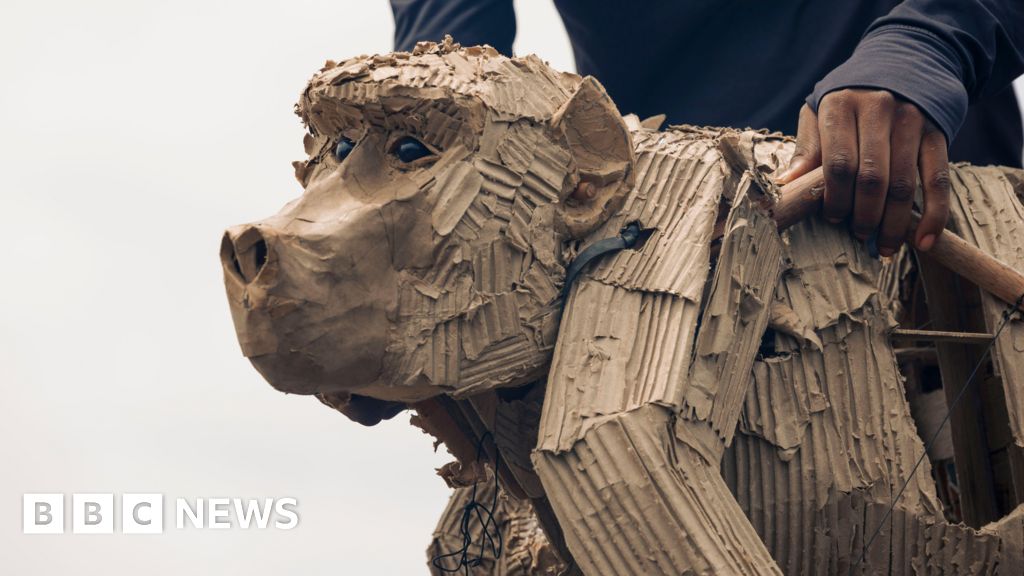- Canada
Indigenous migrants in northern Colombia battle worsening droughts and floods
时间:2010-12-5 17:23:32 作者:Audio 来源:Housing 查看: 评论:0内容摘要:. The AP is solely responsible for all content.. The AP is solely responsible for all content.
“Now we are land beggars,” she said.A woman waits for fish after a catch by fishermen at Lake Baringo in Kampi ya Samaki, Kenya, Thursday, July 21, 2022. (AP Photo/Brian Inganga)

A woman waits for fish after a catch by fishermen at Lake Baringo in Kampi ya Samaki, Kenya, Thursday, July 21, 2022. (AP Photo/Brian Inganga)Women wait for fish after a catch by fishermen at Lake Baringo in Kampi ya Samaki, Kenya, Thursday, July 21, 2022. (AP Photo/Brian Inganga)Women wait for fish after a catch by fishermen at Lake Baringo in Kampi ya Samaki, Kenya, Thursday, July 21, 2022. (AP Photo/Brian Inganga)

Baringo is one of ten lakes in Kenya’s Rift Valley that have been expanding over the past decade. The entire Eastern African rift system, which stretches south to Mozambique, and the Western Rift - all the way to Uganda - are also affected. The rainfed waters have submerged villages and islands and brought the fierce Nile crocodiles face-to-face with residents.The rising lake waters have displaced more than 75,000 households, according to a 2021 report on the expanding lakes by Kenya’s Ministry of the Environment and Forestry and the United Nations Development Program.

Flooding around Lake Baringo has been among the most severe, according to the report, with more than 3,000 households destroyed.
Lake Baringo remains an important source of freshwater for villagers, livestock, fisheries, and wildlife. But scientists fear it could someday merge with a large salt lake not far away, the also-expanding Lake Bogoria, contaminating the freshwater.Evan Hauptmann, a multi-sport athlete in high school, decided to run Falmouth at 17. He wanted to finish in under an hour and felt fine until a big hill late in the race made him light-headed. By then he could see the finish line and his competitive nature kicked in.
Soon after finishing, he lost consciousness. His temperature was the highest Jardine has seen at Falmouth – 112.8 degrees (44.9 Celsius).“That’s crazy,” said Dr. Sameed Khatana, a professor of medicine at the University of Pennsylvania. “That is not compatible with life.”
But Hauptmann got immediate care, with a half-hour in the ice bath bringing his temperature down quickly, and he went home that day. Doctors worried about organ damage. Blood tests showed high protein levels from muscle breakdown, but they came down and he avoided lasting injury.Two weeks later he started playing football again. But he’s more aware of heat’s danger, and makes sure to stay hydrated and aware of how he is feeling.
- 最近更新
- 2025-07-07 03:52:05Welcome to summer: U.S. braces for first significant heat wave of the new season
- 2025-07-07 03:52:05America’s gamble in Iran makes the world a more dangerous place
- 2025-07-07 03:52:053 hours ago An AI video ad is making a splash. Is it the future of advertising?
- 2025-07-07 03:52:05Israel weighs next phase of Iran campaign after US strikes
- 2025-07-07 03:52:05Tracking Ukraine’s battle against Russia in maps and charts
- 2025-07-07 03:52:05Elevate your dining experience, whether you’re watching Wimbledon, Wicked, or the sun go down
- 2025-07-07 03:52:05Trump’s fateful choice on Iran
- 2025-07-07 03:52:05The truth about Mark Zuckerberg’s macho-man makeover
- 热门排行
- 2025-07-07 03:52:05Video shows Air India plane crashing in Ahmedabad
- 2025-07-07 03:52:05Day after day, Palestinians in Gaza risk harrowing journey in desperate search for food
- 2025-07-07 03:52:05Tariffs on Canada and Mexico Could Raise Car Insurance
- 2025-07-07 03:52:05Court blocks Louisiana law requiring schools to post Ten Commandments in classrooms
- 2025-07-07 03:52:05What is a debt consolidation loan — and how can it help you lower your interest rate?
- 2025-07-07 03:52:05In this rural Colorado valley, cuts to Medicaid would have vast ripple effects
- 2025-07-07 03:52:05Anker Surge Protector Power Strip
- 2025-07-07 03:52:05Covering the military parade and a No Kings rally on the same day
- 友情链接
- PSG's historic 5-0 Champions League win marks a new era in European soccer Photos: Decades-old diamond industry in India’s Surat faces an uncertain future Blessings for dogs? Bring them to Mexico City's cathedral and St. Anthony will do the rest Greg Millen, a longtime NHL goaltender and hockey analyst, dies at 67 UN researchers warn that Asian scam operations are spreading across the rest of the world Cheap parcels from China will no longer be duty-free Israel's use of human shields in Gaza is widespread, sources say Australian PM Albanese to visit Indonesia in first overseas trip since re-election Q&A: Jagged Edge's new album celebrates love, longevity and brotherhood These streamlined Neapolitan meatballs are made with panko breadcrumbs Loretta Swit, who played Houlihan on 'M.A.S.H.,' dies at 87 From France comes a call for Trump's America to return Lady Liberty. Here's why it won't happen 'Eminent Jews' review: David Denby profiles great figures Rite Aid returns to bankruptcy protection as it seeks to sell most assets Tyreek Hill: 'I've got to prove myself' to Dolphins after last season's frustrations Mother of jailed Egyptian democracy activist hospitalized after resuming hunger strike 'Lfe and Art' review: Richard Russo explores how life informs his art Dominick Ruggerio, Rhode Island's longest-serving legislator, dies at 76 Wall Street ends lower ahead of Nvidia's earnings report Cardoso scores 23, Vandersloot sets franchise marks in points, FGs in Sky's 97-92 win over Wings Nick Taylor makes it look easy in the rain and shares the lead at Memorial Climate Migration: Kenyan woman loses nearly all to lake In New Zealand's Parliament, a battered cookie tin decides which new laws get debated Small plane crashes into Los Angeles-area neighborhood, killing 2 Syria and Saudi Arabia agree to boost economic cooperation after Western sanctions eased Christian Yelich exits the Brewers' game against the Phillies with a hand injury LAFC claims final spot in Club World Cup with 2-1 victory over Club América in play-in match How the democracy sausage, a polling day snack, became Australia's election symbol What to do if you can't pay the taxes you owe Water bottles have an array of new designs and functions
